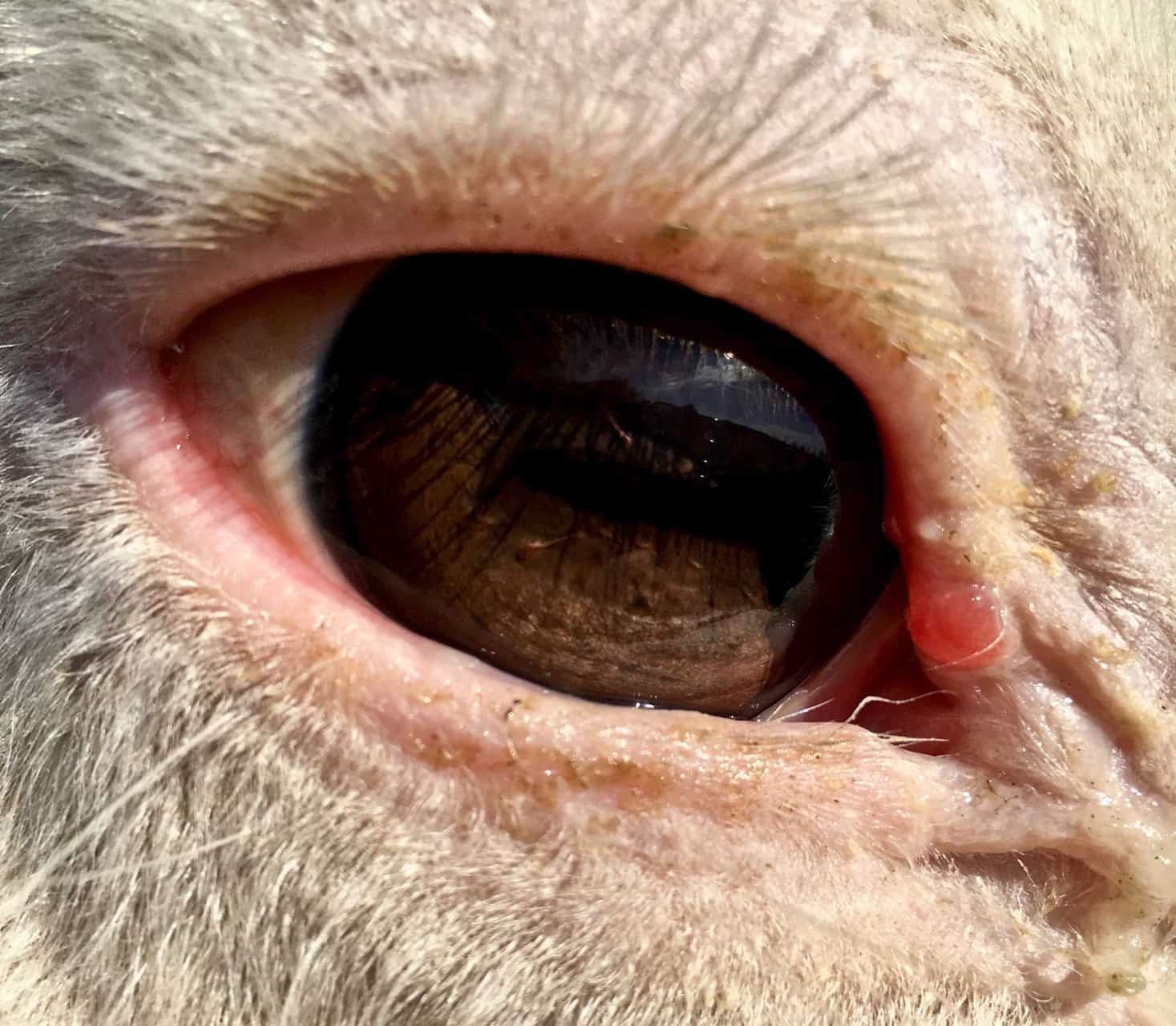Recognizing and Handling Equine Eye Issues
- Topics: Article, Other Eye Problems

Signs to Look Out For
Often the first and most subtle sign you will notice is a change in eyelash position. Look at your horse’s face from the front and at the eyes from the sides. The affected eye’s lashes might begin to point down slightly before the condition progresses to the more obvious squinting. You might notice increased blinking, or the eye could be completely shut. Other signs include swelling of the area around the eye, excessive tearing, or a change in the ocular discharge to a thick consistency that’s yellow or blood-tinged. Look for asymmetry: Horses often will have a condition only affecting one eye; compare the eyes to aid your evaluation. Rubbing an eye continually is another sign of discomfort that might need immediate attention. Pink, wartlike growths originating from any part of the eye could represent a type of cancer called squamous cell carcinoma that can spread if not addressed swiftly.
Horses have extremely strong eyelid muscles and can keep their eyes shut tightly, often when you approach to investigate. They might also throw their head in the air or try to get away from you. If your horse won’t let you get a good look at his eye, your veterinarian can use sedation and potentially a local nerve block to temporarily numb the eyelid and facilitate detailed examination. If your horse does allow you to look at the eye more closely with a penlight, you might notice general reddening; a red, white, or yellow region; apparent cloudiness; or the eye might even appear blue.
What to Do
If you see any abnormality in your horse’s eye, contact your veterinarian immediately. Never begin treating with an ointment you have left over from a previous issue or from a friend without talking to your veterinarian first. Some ointments can make certain conditions much worse. For example, if you apply a steroid ointment intended for treating uveitis (inflammation inside the eye) in an eye with a corneal ulcer, the ulcer will likely worsen, which could affect treatment success
Create a free account with TheHorse.com to view this content.
TheHorse.com is home to thousands of free articles about horse health care. In order to access some of our exclusive free content, you must be signed into TheHorse.com.
Start your free account today!
Already have an account?
and continue reading.
Written by:
Rana Bozorgmanesh, BSc, BVetMed, Dipl. ACVIM, MRCVS
Related Articles
Stay on top of the most recent Horse Health news with












